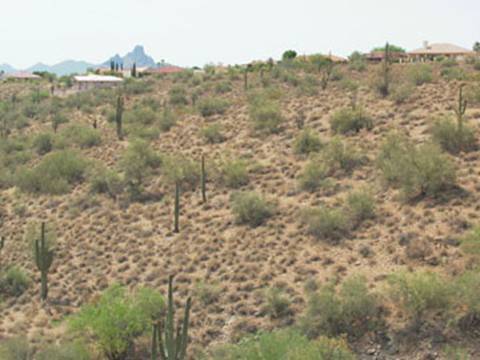
This is a historical page from the old MaxMax.com website. Please use the current site at www.MaxMax.com.
|
This is a historical page from the old MaxMax.com website. Please use the current site at www.MaxMax.com. |
|
We have had many people inquiring about how to emulate the Kodak Color IR film (CIR) and the discontinued Kodak CIR digital camera. Kodak CIR film is being phased out. Kodak has already stopped the manufacture of CIR film in some sizes such as 70mm. Kodak CIR film has three color emulsions: red, blue and green. The blue channel is open to visible blue and opens up again in the infrared in the 700-800nm range. The red and green channel are not open in the IR range. Because the blue is open to the IR, if you add a blue blocking filter, such as a Wratten 12, the blue channel will see only IR. When the film is developed, the red and green are normal visible color while the blue contains the IR information. Color digital cameras and camcorders that we modify to see IR+Visible light can see IR and visible light simultaneously. The red, blue and green channels see in the visible range, and the red, blue and green channels also see in the IR to varying degrees. This is why a normal, stock camera has an IR Cut Filter (ICF); the IR needs to be blocked on a normal camera so that images look normal. The red channel is the most open in the infrared followed by the green and lastly the blue channel. Please see the graph below that shows a typical image sensor response.
Note that the green and blue channels are a subset of the red channel. The blue and green channels duplicate information in the red channel while the red channel has the greatest information in the IR range (700nm to 1000nm). Because the red and green channels open up in the IR, it is currently not possible to duplicate CIR film with one picture. It is possible to duplicate CIR photography with either two cameras using different filters or one camera taking two shots using different filters. Some customers have created a rig that holds two of the same cameras linked with a simultaneous shutter release. The two cameras are setup so that one takes a normal picture and the other takes an IR picture often using a 715nm filter. After the two images are acquired, the images are usually brought into Photoshop. The normal image blue layer is hidden and the red layer from the IR picture is copied and pasted into the normal image as the new blue channel. This duplicates the Kodak CIR look. Often, users prefer to hide the red image of the visible picture and paste the red from the infrared image into the red channel. This same technique can be used with one IR+Visible camera set on a tripod. The first picture should be using our IR blocking filter XNiteCC1. The second picture can be done with an IR filter, but the most common choice is out XNite715 715nm filter. Sam Outcalt has outlined his method for generating CIR photographs below.
Simulated
CIR Images from a Digital Camera S.I.
Outcalt Begin
with a typical tripod stabilized visible light image V.  Remove
the red from this image by setting the output level of red to zero yielding then
rescale the RGB histogram yielding Vbg.
Begin
a parallel process by collecting image R with a Hoya R72 deep red filter over
the camera lens. Do not disturb the tripod so the scene is a duplicate of the
visible light image.
Remove
the blue and green from this image by setting blue and green output levels to
zero and rescaling the red yielding a pure red image Rp.
Mix
layer Rp on background Vgb then adjust the opacity to near 50% producing a CIR
Image. Save, close and reopen the CIR image. The CIR image will be dark so the
histogram should be rescaled RGB level adjusted to produce an image with
pleasing brightness and contrast.
This
image is a crude simulation of images collected using CIR positive transparency
film with IR enhancement filter. The
image manipulations were accomplished using only the <Levels> and
<Layers> controls within Adobe Photoshop Elements. Rescaling is simply the
process of expanding the histogram range to cover the entire range of output
levels (0-255). Color output is set to zero by moving lower output levels right
slider to zero. In
the image above, the bright red orange vegetation reflectance along the
ridgeline is produced by the irrigated of lawn trees. There is a shift from red
orange to pale orange as draught stress increases decreasing the IR reflectance
of chlorophyll. The
following telephoto image was collected in late June of 2006 near
Note
the pronounced down slope transition from bright orange on the irrigated lawn to
the down slope natural vegetation.
At
?lawn? scale note the plants in the middle foreground are on a drip
irrigation system compared to the trees in the background.
|
|
Send mail to webmaster@maxmax.com with
questions or comments about this web site.
|